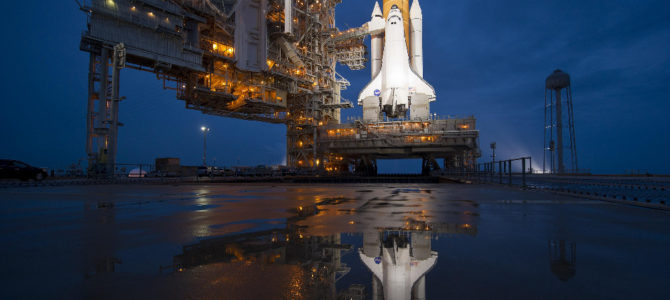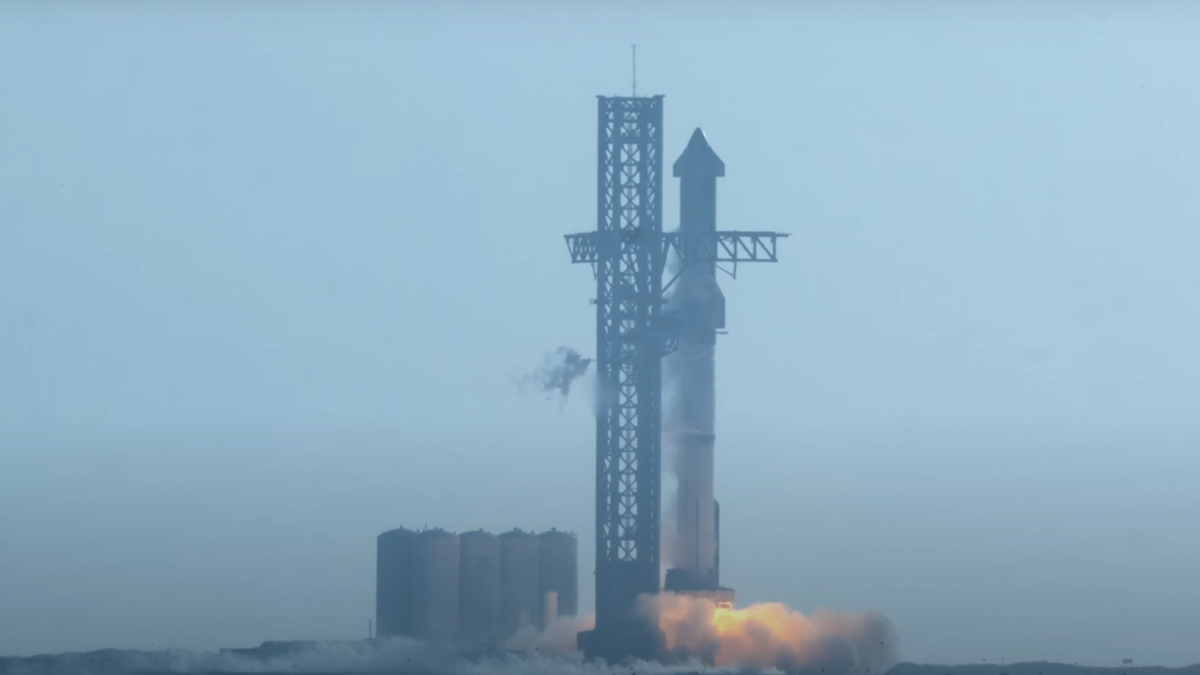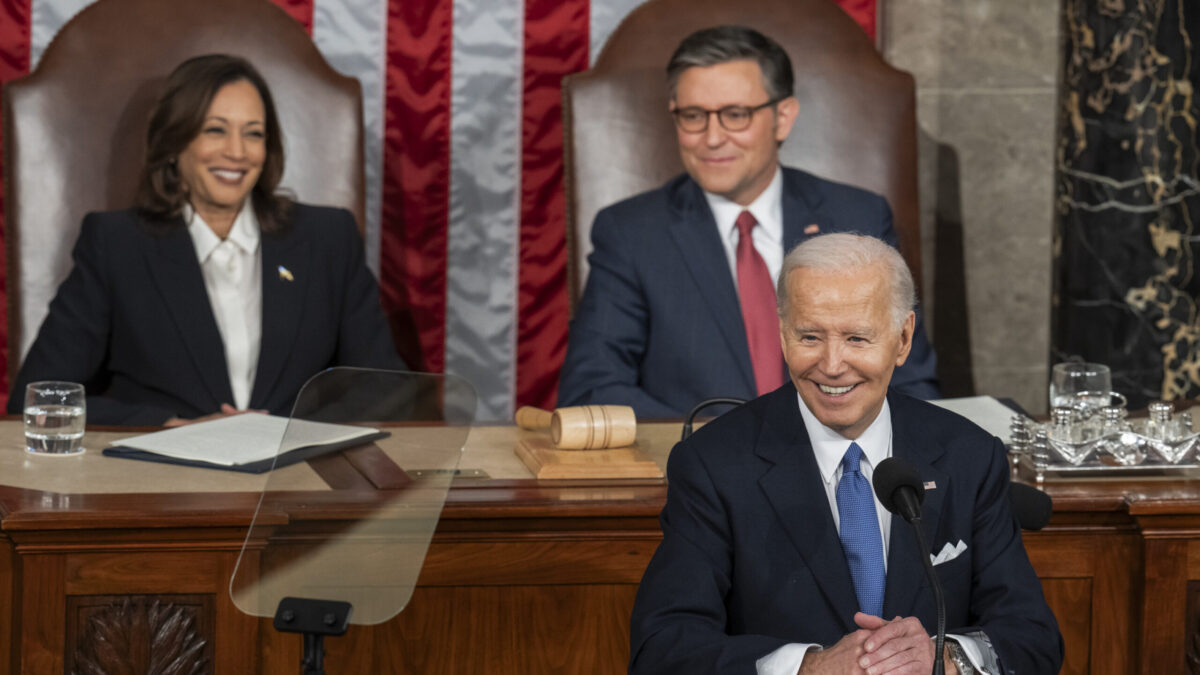
The late, great Herb London, the president of the London Center for Policy Research who passed away this month, long argued that China’s immediate goal is regional mastery. The country, which continuously harasses U.S. ships and planes, has one central mission at the top of mind, and that’s creating a sphere of global influence. Recently, though, space has become a focal point of Beijing’s strategy.
The country has bluntly stated that it wants to become an “aerospace superpower” and, in 2015, it began creating a space force for that very reason. On Friday, it even softly landed a rover onto the far side of the Moon, something that no nation has ever done before.
China’s New Defense Strategy
China is not increasing its presence in space just for the sake of bulking up its defensive prowess. According to the International Assessment and Strategy Center’s Richard Fischer, it’s doing so “to achieve control of low earth orbit in order to defeat the United States on Earth.” China seeks to seize Earth’s ultimate high ground, where our communications and global positioning system satellites make our lives better every day.
Beijing’s actions, which include anti-satellite missile and strike vehicle tests, match up with its harsh space rhetoric. As noted in a report from the U.S.-China Economic and Security Review Commission, “China is pursuing a broad and robust array of counterspace capabilities, which includes direct-ascent anti-satellite missiles, co-orbital anti-satellite systems, computer network operations, ground-based satellite jammers, and directed energy weapons.”
It is not without reason that Lt. Gen. Steven Kwast remarked that “China is on a 10-year journey to operationalize space” while we’re on what appears to be an unacceptable 50-year trajectory of leaving space. While President Trump announcing the intent to craft a space force of America’s own this year was a welcome step in the right direction, the United States is still lagging.
Although the United States spends more on space and national defense than any other nation, it does so with reckless inefficiency. Former chairman of the Joint Chiefs of Staff Michael Mullen wasn’t wrong when he warned that “the single, biggest threat to our national security is debt.” Proving the extent of the problem is the Department of Defense’s recent announcement that it failed its first-ever audit.
With deficit hawks like Sen. Rand Paul (R-Ky.) sounding the alarm bell for years on how the government spends money on needless waste, such as more than $700,000 on a single National Science Foundation study, which brought together researchers from four major universities to determine whether there is a missing article in Neil Armstrong’s famous “one small step for man” quote, does this news really surprise anyone?
If America is to remain the superpower that it is today, it cannot acquiesce, sitting idly by as Beijing continues to ripen its capabilities. In this battle of ideas, we need to prioritize our spending so we can compete with China through innovation; by thinking bigger, better, and faster than our adversaries.
As London had mentioned, what we need is a new Sputnik movement––a wakeup call that arouses entrepreneurial spirit and the desire to consider STEM-related activity for the good of the country. That will only be achieved if we spend less on pork like robotic squirrels and more on tools that keep America safe.
NASA Is Working On This, But More Is Needed
NASA understands the need to play an integral part in the new space race and motivate the American people to contribute to the scientific vanguard. It has responded by building the Space Launch System (SLS), the biggest, most powerful rocket in U.S. history that will soon bring American astronauts to Mars for the first time. SLS is the first rocket designed for deep space exploration since the Apollo program’s Saturn V, which last flew in 1973, and it will have roughly 10 percent more lift, with six times the payload volume of any other American rocket ever created.
It’s critical that the United States offset other budget items to continuing developing SLS. Perhaps the best indication of SLS’s success comes from China’s response to its progress. With recent headlines, such as “China aims to launch a rocket larger than NASA’s SLS in 2028,” arising after China National Space Administration head Li Guoping’s speech, it’s clear that Beijing is itching to mimic us by creating a rocket of comparable size and payload capacity that can reach milestone exploration feats like Mars. What matters is that we thought of it and will implement it first. That’s how you win the battle of ideas.
But the United States can’t win the space race with one new rocket. The key ingredient for a pathway to victory is a sympathetic White House that’s willing to go one better than Beijing by setting ambitious goals. That was not a strength of the previous administration, which canceled the years-in-development Constellation program that would’ve sent America back to the Moon.
Thankfully, the tide appears to be turning in the Trump administration. Just weeks ago, less than one year after the president signed Space Policy Directive-1, which directed NASA “to lead an innovative and sustainable program of exploration…to enable human expansion across the solar system,” NASA submitted a bold plan to Congress that shifts the agency’s purpose toward scientific exploration and discovery, with missions to the Moon and Mars hot on its radar.
Per a NASA press release: “The Exploration Campaign builds on 18 continuous years of Americans and our international partners living and working together on the International Space Station. It leverages advances in the commercial space sector, robotics and other technologies, and accelerates in the next few years with the launch of NASA’s Orion spacecraft and Space Launch System (SLS) rocket.” None of these welcome developments would have been possible without open ears and cooperation from officials in the White House.
A Frontier Worth Exploring
Space is not necessarily the final frontier, but it is a frontier worth exploring and maintaining American leadership in. It is the high hill that overlooks the entire Earth. Over the decades since Apollo, America’s space prowess has improved our lives through technology advances in countless ways and advanced our image as the leader of the world.
Given China’s stated space aims, American absence likely means Chinese dominance. We have already all but ceded the capability to put humans in space to Russia. Is it wise to cede heavy lift and deep exploration capabilities to China?
The last thing we should do as a nation is stop here. With China remaining as resolute as ever, U.S. policymakers cannot afford to take their thinking caps off and must always stay two steps ahead of the curve.
After all, space might soon become a war-fighting domain. In the realm of self-defense, America has almost never sold itself short before and it shouldn’t start now. Here’s hoping that the Trump administration continues to shoot for the literal stars.









